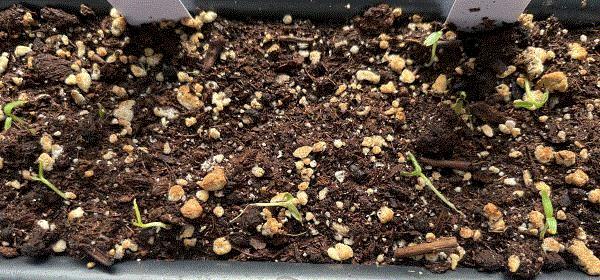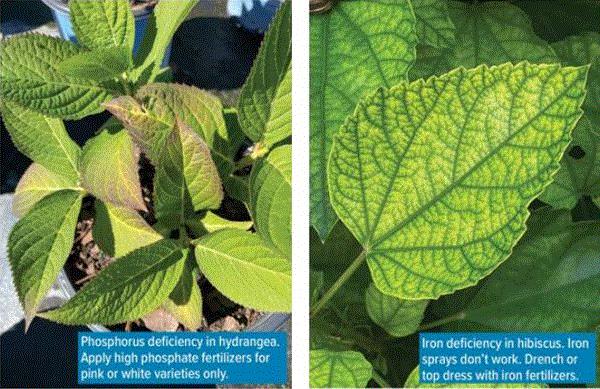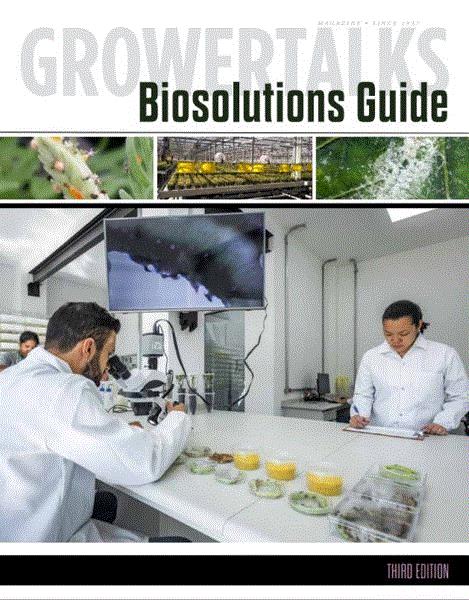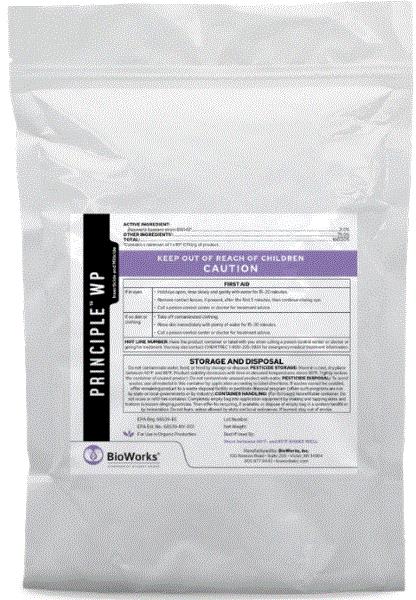What the ... ?
Part of my full-time job is to conduct experiments to test out various new products and how to better use existing pesticides. When I moved from academia to industry, I told friends that most of my jobs would be the same, except now I’d have more time for research and outreach. That has turned out as I'd predicted. In fact, it's gotten more interesting. Not only do I work on insecticides, but I also work on fungicides, herbicides, plant growth regulators and biostimulants. And not just on ornamentals, but also vegetables.
I recently started some tomato and pepper seedlings for an in-house experiment. The seedlings, although they’re grown in new trays and media, collapsed after only a few days. What could be happening here?

(Now that I think about it, after writing this newsletter for seven years, I still can’t tell people I meet that my full-time job is a writer. Neither have I bought a jon boat with the money I made from this gig, fulfilling my dream of becoming a job boat captain as I’d stated in the inaugural issue. I wish I could blame it on Chris Beytes or Jen Zurko, but I can’t. My money has all gone to other priorities, such as dog toys for the beach house, a new coat of paint for the beach house, annual flood insurance for the beach house, a gravel driveway for the beach house, etc. I see a pattern here ... sigh ...)

Nutrient Deficiencies in Foliage Plants and Dahlias
You could perhaps deduce from the picture under the previous heading that I’m not exactly a good horticulturist. Guilty as charged. So I often have to work harder to answer questions about cultural or production issues, such as nutrient deficiencies. That involves lots of research and chatting to real horticulturists.
So when I saw the pictures Lynn Griffith had shared in the June issue of GrowerTalks, I thought, “Hey, I’ve seen purple-leaved hydrangea before. Heck, I have a block of them in my research nursery pad right now!”
Lynn not only shows the symptoms of phosphorus deficiency in hydrangea or magnesium deficiency on alocacia, but he also provides remedies to these commonly seen nutrient deficiencies on foliage plants.

Photo credit: Lynn Griffith.
I also want to introduce y’all to a couple of resources on diagnosing and correcting nutrient deficiencies in dahlias since I recently did some research on this topic. The first one is a recording of a webinar by Brian Whipker of North Carolina State University on dahlia nutrient disorders. Go HERE to watch the YouTube video.
The second resource is an e-GRO article on monitoring and correcting nutrient deficiencies in dahlias produced from vegetative cuttings. Go HERE for this article. Both resources have green pictures that may help you diagnose the oddly colored or misshaped dahlia leaves.

2025 Biosolutions Guide is Available

The third edition of GrowerTalks’ Biosolutions Guide is now freely available to all. You’ll get a copy with the June issue of GrowerTalks. Can’t wait until it comes in the mail? You can download a copy by going HERE.
Similar to other GrowerTalks guides, the 2025 Biosolutions Guide has lots of informative articles authored by experts and industry leaders. I often find these articles just as useful as the efficacy charts of bioinsecticides and biofungicides.
If you’re a faithful reader and user of the Biosolutions Guide, you probably notice a trend in the articles collated in each edition. The first edition discussed the needs and importance of biological pest and disease management solutions. The second edition talked about research, best practices and various strategies for incorporating biological control or bio-based solutions and getting the most out of them.
The third edition focuses on tackling supply chain and logistical challenges, advancing biosolutions, and changing the minds of users and consumers.
Michael Brownbridge of BioWorks talks about what to consider when making the transitions to a more biological approach to managing pests and diseases. Michael’s planning checklist is a concise way to guide you through the mental exercises of planning for a bio-based program.
Jeremy Webber of Koppert argues that with some careful planning you can integrate biological control and pesticides. Jeremy demonstrates his points using three examples—aphids, spider mites and western flower thrips.
Lowell Halvorson, who covers the breeding community for GrowerTalks, talks about how logistics, such as production and transportation, can impact the quality of the biological products.
And, finally, the “Bug Lady,” Suzanne Wainwright-Evans, walks us step-by-step through the process of testing the quality of biocontrol agents after receiving them (but before releasing them).
Lots of good reads and information in the third edition of GrowerTalks’ Biosolutions Guide. Get a digital copy HERE.

BioWorks Launches Principle WP

I talked about the approval of the new Principle WP bioinsecticide in the April issue of this newsletter. Last week, BioWorks officially launched this product to the ornamental market in the USA. It’s registered for use in most U.S. states, except Alabama, California, Connecticut, Florida, Iowa, Indiana, Kansas, Massachusetts, Michigan, Montana, New Mexico, New York, Oregon, South Dakota, Texas and Virginia. I except more state registrations will be approved over the next few months.
Principle WP contains the entomopathogenic fungus Beauveria bassiana strain BW149, which is a different strain from those in BotaniGard (strain GHA) and Velifer (strain PPRI 5339).
Principle WP has several key features that may be beneficial in its use: wettable powder formulation, four-hour restricted entry interval (REI), zero-day pre-harvest interval (PHI), OMRI listed, excellent crop safety and refrigerated storage isn’t needed. It can be used on food crops and non-food crops grown indoors and outdoors to manage a broad spectrum of target pests, such as thrips, whiteflies, aphids, mealybugs and caterpillars. This new product can be applied by spray, drench or cutting dip, and is compatible with many conventional and biopesticides.
Go HERE to find more information about Principle WP, including label, SDS, trial data, overviews, guidelines on low volume application and more. Go HERE for a technical white paper on Principle WP, where you’ll find lots of useful technical details, such as the speed of activity, optimal temperature and relative humidity, application rates and frequencies, trial data, etc.

Answer to "What the ... ?"
The poor seedlings that are the subjects of this week’s “What the …?” aren’t victims of abuse or poor care, but damping off. You can see in the picture below that the hypocotyl (emerging shoot) has shriveled down to almost nothing and couldn’t support the weight of the seedling. Thus, the seedling falls over and dies.
Most cases of damping off are caused by some kind of soilborne pathogens. But abiotic conditions—such as hot irrigation water, over fertilization (basically, too much salt), drought, etc.—can also cause damping off. Based on what I've seen, damping off symptoms due to abiotic factors often start from the top. In this case, the wiry, shriveled stem close to the media tells me that the cause may be a fungal or oomycete pathogen.

There are many pathogen groups that can cause damping off of seedlings, including Fusarium, Phytophthora, Pythium, Rhizoctonia, Sclerotinia, Sclerotium, and even Alternaria and Botrytis. My guess of the causal agent in this case is one of the fungi, but I can’t say for sure. I’ll have to send in samples for diagnosis.
Proper diagnosis is important to selecting the right fungicide for management. In my case, I’ll just throw out all the trays and start all over again because I don’t have enough survivors for my experiment anyway. Also, who's to say the survivors are simply surviving for now? The media is probably contaminated, so I’m not going to spread the disease around by potting and mixing the seemingly healthy, but actually infected, plants with other plants.
I used new trays and media, so where did the pathogens come from? There are many potential routes of exposure. It’s possible that the cement mixer I used to prepare the media, which is shared with other colleagues, might have been contaminated with field soil. It points to the importance of having not just clean trays and media, but also clean equipment and growing environment in preventing damping off of seedlings.




See y'all later!

JC Chong
Technical Development Manager at SePRO
Adjunct Professor at Clemson University
This e-mail received by 27,847 subscribers like you!
If you're interested in advertising on PestTalks contact Kim Brown ASAP!